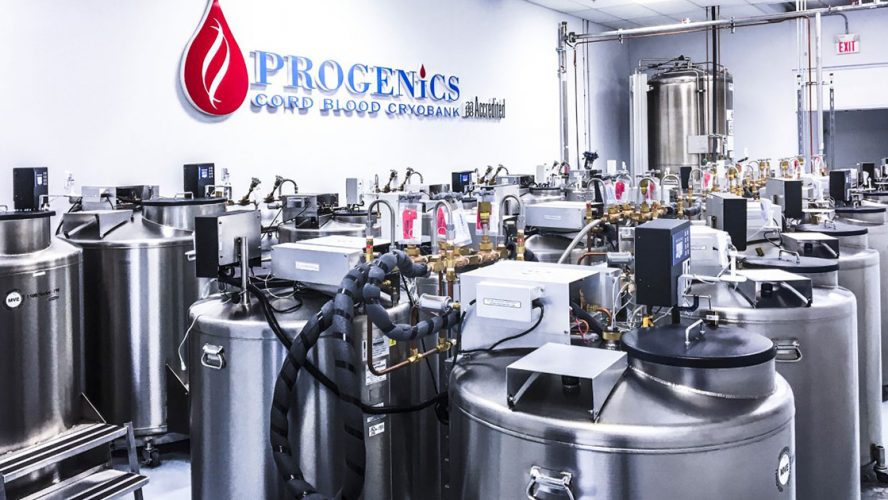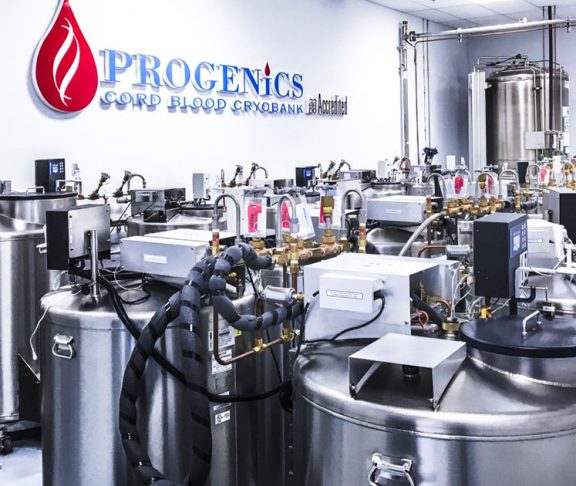
Elias Kalouche
Vice President, Progenics Cord Blood Cryobank

In collaboration with Dr. Nicholas Pairaudeau.
You may have heard the term cord blood used in popular television shows like Grey’s Anatomy during scientific breakthroughs – but it might be more relevant to you than you think.
Cord blood is the blood that remains in the umbilical cord and placenta after a baby is delivered, and contains various types of cells, including but not limited to, Hematopoietic Progenitor Cells (HPCs) which are blood forming cells, in addition to other nucleated cells which together with the HPCs represent the total nucleated cells (TNC). To learn more, we spoke with Progenics Cord Blood Cryobank on how Canadians are using cord blood and why.
When is cord blood most commonly used?
Cord blood is most commonly used to treat patients diagnosed with debilitating diseases, such as: Acute Leukemia, Metabolic Disorders, Plasma Cell Disorders, Platelet Abnormalities, and other Malignancies.
How difficult is it to typically find an exact match?
An exact match is difficult to find within multi-ethnic groups. However, finding an exact match is possible for autologous use, in other words, when the cord blood is needed by the cord blood donor. Private banking of cord blood would increase the chance of finding a close match for related use by a family member should a medical need arise in the future.
Medical scientists have now applied the stem cells found in cord blood to successfully treat over 80 diseases.
What are the benefits to private banking?
Applicable Health Canada regulations authorize Private Cord Blood Banks to reserve collected cord blood unit from an infant donor for autologous or related use by a family member should a medical need arise in the future to treat some debilitating diseases. Medical scientists have now applied the stem cells found in cord blood to successfully treat over 80 diseases.
- Secure 100% HLA match of HPCs for autologous use by the cord blood donor.
- Increase the probability of finding close HLA match for related use by family members belonging to ethnic minorities.
What does the banking process look like?
The banking process is based on extracting stem cells and other nucleated cells from cord blood units during processing and adding cryoprotectant solution prior to initiating the cryopreservation process and subsequently storing the stem cells at temperature below -150°C where the stem cells can remain viable indefinitely.
What kind of expertise should you look for when selecting a private cord blood bank?
Proven track record of consistency in producing high quality of post processing parameters such as:
- High recovery (%) of total nucleated cells (TNCs) to minimize the loss of stem cells and other nucleated cells during processing.
- High number of total nucleated cells (TNCs)
- High percentage of viable total nucleated cells (TNCs)
- High number of viable CD34+ cells (HPCs)
- High percentage of viable CD34+ cells (HPCs)
What differentiates Progenics?
- Stringent quality management system designed to consistently comply with regulatory and international accreditation standards.
- Patient focused through consistency in producing high quality of post processing parameters that exceed regulatory and accreditation requirements with a proven track record — See table below.
Cord Blood Processing Quality Report
| Date | TNC Yield (%) | Total NC (10⁶) | CD34 x 10⁶/unit | TNC Viability (%) | CD34 x 10⁶/unit |
| AVERAGE-2012 | 98.16 | 985.39 | 3.32 | 93.45 | 99.58 |
| AVERAGE-2013 | 98.29 | 980.7 | 3.62 | 92.86 | 98.99 |
| AVERAGE-2014 | 98.18 | 1026.21 | 3.87 | 93.37 | 99.19 |
| AVERAGE-2015 | 98.39 | 983.79 | 3.38 | 93.79 | 99.15 |
| AVERAGE-2016 | 98.02 | 968.33 | 3.48 | 94.32 | 99.17 |
| AVERAGE-2017 | 98.04 | 915.18 | 3.26 | 94.92 | 99.25 |
| AVERAGE-2018 | 97.79 | 854.4 | 3.05 | 94.69 | 99.14 |
- Cord blood units received from hospitals are processed as soon as they are received by the processing laboratory and cryopreserved within 48 hours from the collection time.
- Corporate culture that promotes creativity, knowledge transfer and continuous improvement.
- Corporate leaders recognized for their expertise in cord blood banking at the national and the global levels.
What is the most important thing for Canadians readers to walk away with?
To make an informed decision about the criteria for choosing a trusted cord blood bank that consistently produces high quality of processing parameters, which in turn would increase the chance of effective treatment should a medical need arise in the future to use the cryopreserved stem cells.



